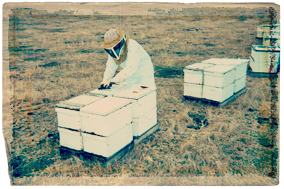Bee-lieve It or Not, It’s True!
Agriculture depends greatly on the honeybee for pollination.
Honeybees account for 80% of all insect pollination. Without such pollination, we would see a significant decrease in the yield of fruits and vegetables.

Agriculture depends greatly on the honeybee for pollination.
Honeybees account for 80% of all insect pollination. Without such pollination, we would see a significant decrease in the yield of fruits and vegetables.
